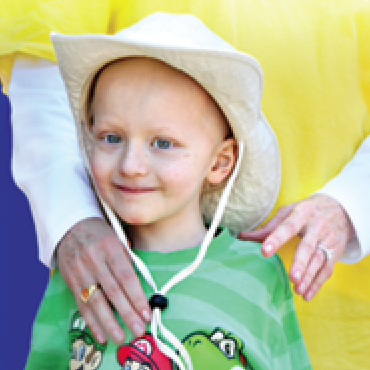Family Centered Approach
Pediatric palliative care focuses on the family as a whole. When a child is diagnosed with cancer or a blood disorder it does not just effect the child but the family as a whole. Stress and uncertainty can be crippling for family members. Palliative care programs provide services to help families cope and process the diagnosis in a healthy way. This comprehensive approach to health care also allows families to be better informed and have the ability to choose options that best fit their needs.
Improves Quality of Life
Upon diagnosis, patients will be assessed for symptoms (i.e. anxiety, depression, pain, fatigue, nausea, etc.), they are treated with an individualized plan for pain management, followed by a  seamless transition to school re-entry and life beyond treatment. The overall goal of palliative care is the provide the best quality of life for each patient and their family.
seamless transition to school re-entry and life beyond treatment. The overall goal of palliative care is the provide the best quality of life for each patient and their family.
The multidisciplinary team of specialists will have access to a variety of treatments and therapies to relieve physical and emotional symptoms associated with cancer and blood disorders. Some examples are nutrition therapy, counseling, support groups, and integrative medicine in addition to chemotherapy and radition treatment. The team will also be able to provide practical services and coordinate with outside resources to provide the families will all the information applicable to their situation such as transportation services or financial counseling.
According to Dr. Kung, the medical director of New York-Presbyterian Morgan Stanley Children's Hospital of Columbia University Medical Center, “Using a new model of palliative care, we are integrating all of the supportive services and expertise we currently provide to patients into a single synergistic unit focused on supporting patients and families through all stages of disease treatment. We will be able to create an entirely novel paradigm for optimum symptom control; for example, allowing us to leverage pain control knowledge from our palliative care experts for a sickle cell patient without the stigma that might be associated with a referral to a self-contained palliative care program devoted to end of life care." Funding for a palliative care coordinator at New York Presbyterian Hospital was a major component of the $550,000 grant The Valerie Fund has committed to over the next three years. 
Cohesive Care
Palliative care uses a collabrative approach to treatment. It incorporates doctors, nurses, social workers, child life specialists, integrative medicine, and many other specialists to form the best treatment plan available. This integrated approach allows for an open line of communication and care between all medical professionals. The team forms an individualized plan of care that is tailored to address the symptoms and maintain normalcy in the patient and family's life throughout treatment.
CONCLUSION:
The integrated, comprehensive approach in which a family receives these new services in one family-friendly location helps to simplify and better lives.This requires the programs to meticulously track patients throughout treatment and follow-up.
i. Source: www.getpalliativecare.org
ii. Source: http://www.cancer.gov/about-cancer/advanced-cancer/care-choices/palliative-care-fact-sheet#q1









